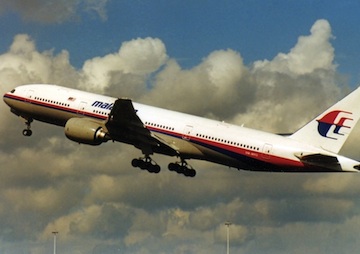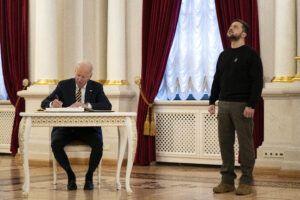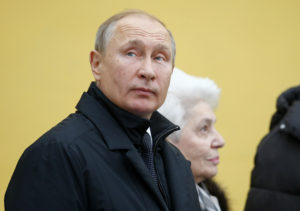MH17 Crash Site, Victims’ Remains Reportedly Under Rebel Control (Updated)
The site of downed Malaysia Airlines Flight 17 became even more politically fraught Sunday, when pro-Russian separatists reportedly took custody of the remains of some 200 bodies of crash victims and obstructed emergency workers' access to the area. This image shows the Malaysia Airlines plane that crashed on July 17. Shutterstock
This image shows the Malaysia Airlines plane that crashed on July 17. Shutterstock
This image shows the Malaysia Airlines plane that crashed on July 17. Shutterstock
The site of downed Malaysia Airlines Flight 17 became even more politically fraught Sunday, when pro-Russian separatists reportedly took custody of the remains of some 200 bodies of crash victims and obstructed emergency workers’ access to the area.
Ukrainian government officials accused rebel militiamen of taking control of the recovery operation and the victims’ bodies (via The New York Times):
But the responders were forced to turn the bodies over to the separatists, Andriy Lysenko, a spokesman for the Ukrainian National Security and Defense Council, said at a briefing in Kiev on Sunday. Mr. Lysenko said officials believed that 38 of those bodies were taken to the morgue in Donetsk, a regional capital that is controlled by separatists.
Michael Bociurkiw, the leader of an observer mission from the Organization for Security and Cooperation in Europe (O.S.C.E.), said that most of the bodies had been placed in three refrigerated railroad cars in the town of Torez, not far from the crash site. He said that monitors were told that 167 bodies were in the cars, which were locked but under the control of rebels from the self-declared Donetsk People’s Republic, one of the main separatist groups.
Monitors were permitted to make a brief inspection, Mr. Bociurkiw said, speaking by phone from eastern Ukraine, and the body bags all appeared to have tags on them. “We were escorted to the railway station by heavily armed guards of the Donetsk People’s Republic,” he said. “They are the ones in charge of that area.”
Large groups of searchers were working at the crash site, near the village of Grabovo, for the first time on Sunday. Coal miners and people in civilian clothes walked through wheat and corn fields, looking for those bodies that were still missing. Bodies were placed in black plastic bags and laid along the side of the road in matted grass.
It was the first day of mass searching, a full three days after the plane was shot down.
The U.S. joined the Netherlands in criticizing the separatists’ treatment of victims and evidence and called for emergency responders to regain access to the crash site, and U.S. Secretary of State John Kerry looked to Moscow for links between the Kremlin and the missile system that purportedly brought the Boeing 777 down Thursday, killing all 298 people on board.
Update: Later on Sunday, Donestk People’s Republic leader Alexander Borodai told ABC News, “We can and we want to give bodies to the relatives but experts have to examine the bodies here. That is international practice.”
–Posted by Kasia Anderson
Your support matters…Independent journalism is under threat and overshadowed by heavily funded mainstream media.
You can help level the playing field. Become a member.
Your tax-deductible contribution keeps us digging beneath the headlines to give you thought-provoking, investigative reporting and analysis that unearths what's really happening- without compromise.
Give today to support our courageous, independent journalists.





You need to be a supporter to comment.
There are currently no responses to this article.
Be the first to respond.